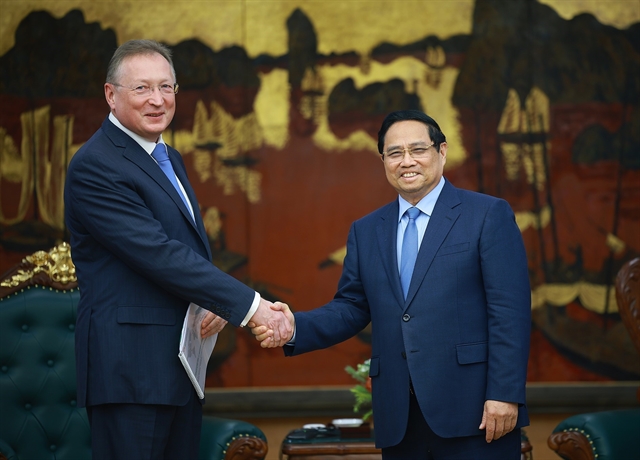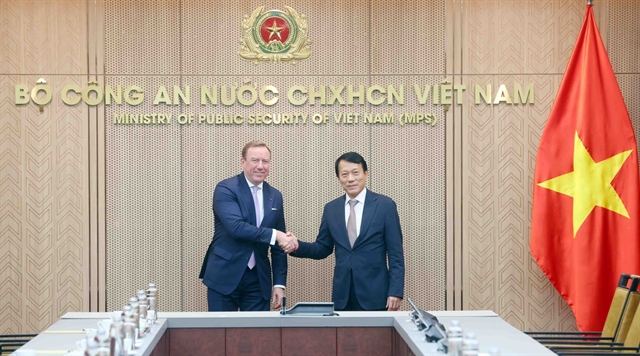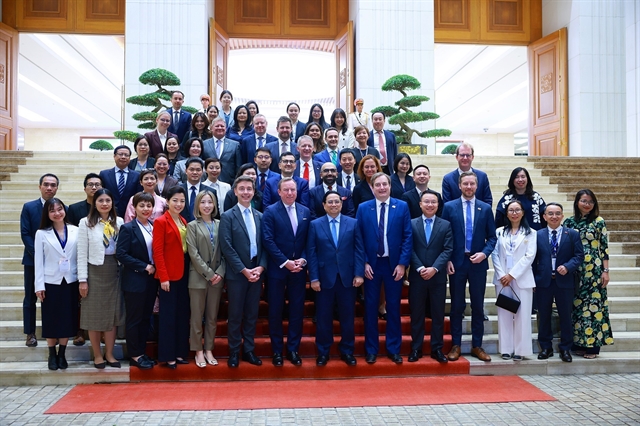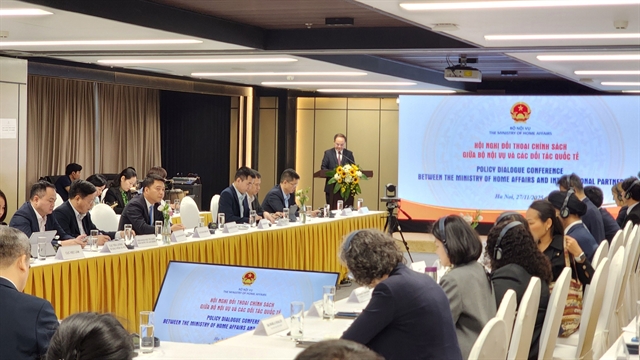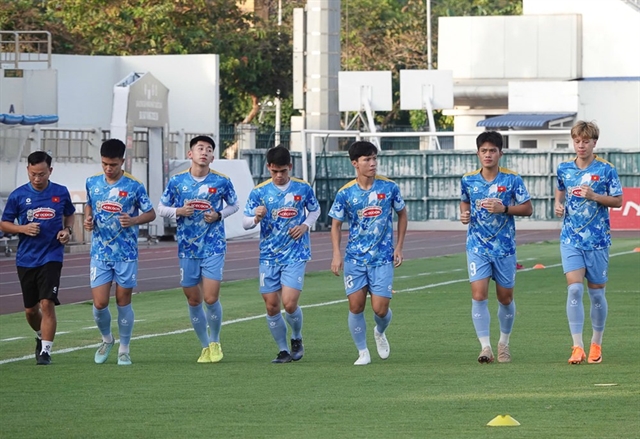 Sports
Sports
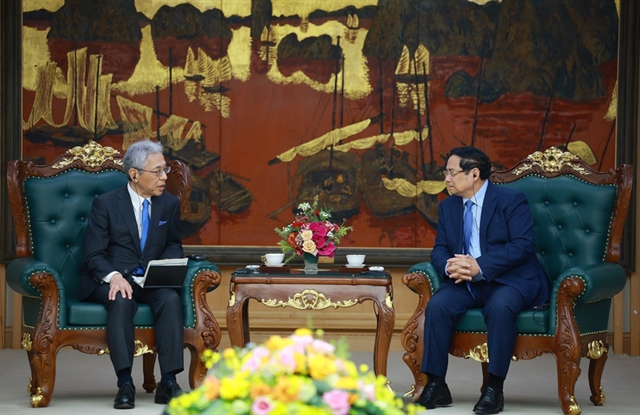

|
| Striker Percy Tau (in white), who previously played for Brighton & Hove Albion in the Premier League, is one of Nam Định's 10 foreign players fielded in the starting lineup against Ratchaburi FC last Wednesday. VNA/VNS Photo Công Luật |
Anh Đức
Thép Xanh Nam Định last week grabbed headlines for a bold decision: in their recent match against Thailand's Ratchaburi FC in the AFC Champions League Two, they named a starting XI featuring 10 foreign players, leaving only one Vietnamese — a surprising but deliberate choice under coach Vũ Hồng Việt.
The decision was met with polarising opinions, with some applauding the efficient use of the AFC's rules and others worried about the long-term impact on local Vietnamese players in the club.
On one hand, with 10 foreign players in the lineup, the sporting edge was clearly on Nam Định's side in the match. With diverse experience, better ball control and sharper attacking instincts, it was no surprise when they beat Ratchaburi 3-1 at Thiên Trường. Evidently, their foreign contingent carried much of the offensive weight and helped them dominate territory, possession and chance creation.
The AFC’s relaxed rules for some club competitions now allow full use of foreign slots, and Nam Định is clearly aiming to use every advantage. Using so many foreign stars signals to fans, sponsors and rivals alike that they’re serious about competing, not just appearing on Asia’s stage.
On the other hand, 10 foreigners also weaken the club’s connection with local identity. Only Lý Công Hoàng Anh, the sole domestic starter, acts as a bridge, someone who understands language, culture and locker-room dynamics.
When most faces are new, from different leagues and backgrounds, cohesion can suffer. Indeed, reports note that while Nam Định dominated possession and created chances, some movement off the ball and collective coordination felt disjointed — understandable given this is their first time using nearly all foreign starters.
There is also a risk to domestic players’ development. Less playing time for local talent could erode their confidence and reduce their opportunities to adapt and grow. When foreign players dominate lineups, young Vietnamese stars might feel sidelined.
Another con is regulation. While AFC Champions League Two permitted a high number of foreigners, that leniency doesn’t extend everywhere. In the upcoming ASEAN Club Championship, Nam Định must reduce the use of foreign players to seven per match, including at least one Asian foreigner, per competition rules. This reduces flexibility and forces the coach to significantly rearrange his strategy.
All in all, Nam Định’s strategy could raise the bar for what top V.League clubs look like: deeper squads, sharper foreign recruitment and more international fixtures. If they succeed — if the squad gels, if foreign stars integrate well — it could force rivals to respond similarly, raising competitive intensity across the league.
Yet, there’s a danger that this becomes a short-term spark rather than a sustainable flame. If the foreign core performs but the domestic bench remains thin, Nam Định risks gaps in squad rotation, vulnerability to injuries or fatigue, especially across multiple competitions.
Việt's decision to use 10 foreigners is a bold gamble. The rewards could be high: better results, continental recognition, greater prestige. But the costs aren’t small: domestic development, club identity, long-term balance and regulatory constraints all pull in different directions.
The best outcome would be if Nam Định can use this strategy to win matches and build trust, showing that foreign-led lineups do not neglect locals, that the club invests in integration and that they respect competition rules. If done well, 10 foreign starters might not just win games — they may reshape expectations in Vietnamese football. VNS

